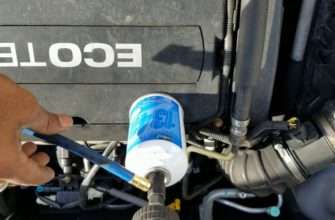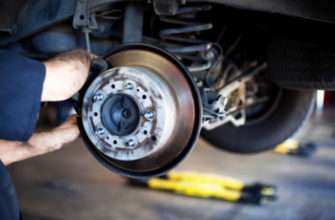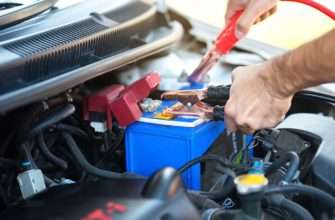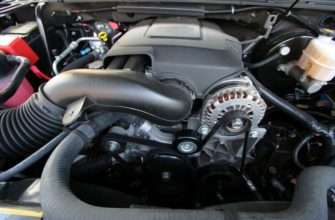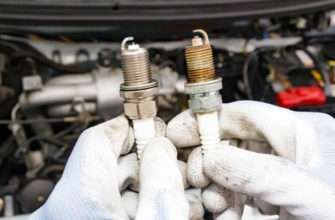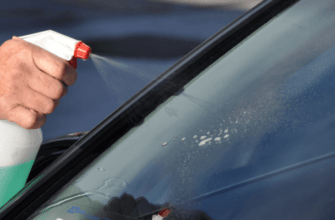“But it didn’t give any sign” Yeah right. We’ve all been there at least once, you’ve taken your position behind the wheel, ready to go, but the vehicle just won’t start.
While gasoline supplies the energy that powers your car, the battery provides the spark of life that get the engine rolling. Without that initial spark, your vehicle isn’t going anywhere. If your vehicle won’t start, the most likely cause is a dead battery.
So how do you tell if your battery is dead? Are there any warning signs? How can you tell if the problem is from your alternator? It’s tough to determine if you’re dealing with a parasitic drain, a bad alternator, or battery problem. Here’s how to fish out the culprit.
Symptoms of a Dead Car Battery
Depending on how much knowledge you have about your car, there are several symptoms you may notice when your battery is dead or about to be. The one everyone knows about is when the starter just clicks but does nothing. Here are other subtle warning signs:
1. Slow crank
Have you noticed your engine takes more time to start or gives a sluggish roll before starting, maybe on the second or third try? Then your battery could be about to die. A good battery will last for about 5 years, but before the 5-year mark, you’ll start experiencing slog engine starts.
When a battery is dead it has a hard time providing the energy boost needed to start the engine, which might explain why your engine cranks slowly and is labored. Before pronouncing your battery dead because of slow cranking starts, you need to rule out the possibility that your spark plugs are worn out or the starter is faulty.
You can rule out a plug problem if the starter cranks at normal speed, but if you still get the same labored start, then you might have a starter problem.
2. Dim headlights
If your headlights are dim even when you floor the gas pedal, then your battery is on its deathbed. Your headlight will illuminate at its brightest when the car battery is fully charged; it is dangerous driving with headlights that changes brightness as your speed up or slow down because you’ll have difficulty seeing what’s ahead and oncoming vehicles cannot recognize you, especially when driving in a fog.
Dim headlights are more noticeable if the alternator is worn out. Your radio, clock, or air conditioner may also give you problems whenever you have a dead battery.
3. Check engine light
There are numerous reasons a check engine light might come on – a dead battery being one. If your engine light comes on, you’ll need to check the battery voltage with a Voltmeter.
4. Clicking sound
The battery supplies power to the starter; the starter uses this to wake the engine. When the power from the battery is not enough to start the engine, you will hear a ‘click click’ sound from under the hood each time you turn on the ignition. A dead battery, however, produces no sound at all. Other causes may be a faulty starter, ignition switch, or the fusible link
5. Backfiring
Backfiring is another symptom that is closely related to a slow crank. If your battery is bad, it may cause sporadic sparks in the engine’s combustion chamber which lead to poor ignition of the fuel-air mixture. The result is more fuel accumulating in the engine combustion chamber which is then passed along partly combusted into the exhaust.
6. Lack of dome light
Depending on the state of the battery, you might see a faint door light or no light at all. If you notice that some things work, but others don’t, then the battery might not be the problem. For instance, if your stereo and headlights work, but the dome light doesn’t come on nor does the door chime, then you may have a faulty door switch, not a battery problem.
Car Battery FAQs
How Many Miles Can I get out of a Car Battery?
On average, a battery lasts about five to six years, but mileage differs from driver to driver. One thing we know for certain is that batteries don’t last forever. Numerous factors can influence the lifespan of a battery:
- Where you live and your driving habits.
- How you use your car’s accessories.
- The condition of your charging system.
- How extreme the weather gets.
When Should I Replace My Car Battery?
If your battery is getting close to three years you should start making plans to get a replacement. From the third year on, most car batteries will become unreliable and might leave you embarrassed or worse, on the roadside.
Does Draining a Car Battery Damage It?
Short term, the answer is ‘no’; continually, yes! If your car battery is drained below the recommended discharge level, the best you can do is check the electrolyte and trickle charge the battery up to 40-50% before passing it on to the alternator.
It’s hard for an alternator to charge a fully drained battery because they weren’t designed to charge batteries from a state of full discharge.
What Percent Should a Car Battery Be at?
The recommended battery varies from car to car depending on the demands of the engine and the electrical components. To get optimal performance from lead-acid batteries, it is recommended to maintain the charge level at 75% or higher.
I Have a New Battery That Is Fully Charged. Why Can’t I Start My Car?
If your vehicle has a hard time starting, the usual culprit is either a dying or dead battery, a bad alternator, loose or corroded terminals, or a problem with the starter. It can be difficult to determine if you’re dealing with a battery or alternator problem on your own, but a car technician will be able to pinpoint the problem with greater accuracy after a couple of tests.
What Is the Normal Charge for a Healthy Battery?
A fully charged healthy battery should read 12.5V or higher. When the engine is running, however, you should get a reading between 13.6V to 14.8V. In the absence of a multimeter, you can perform a simple test of your electrical system by starting the vehicle with the headlights on. Rev the engine and notice if there’s any significant difference in the brightness.
How Do You Know If It’s the Battery or the Alternator?
Well, it depends on the situation you’re experiencing. If you jump start your vehicle and the engine keeps running after you’ve disconnected the spare battery, then the problem is from the battery because the alternator is keeping the engine alive without a battery.
But, if after jump-starting your engine, you connect the drained battery but it still can’t start the engine after idling for about 10 minutes, then the problem is from the battery. Some other signs of a bad alternator to look for are no-starting and trouble starting, dimming lights, and problems with audio system output.
If your vehicle starts but stalls when you’re underway, your battery is probably not getting enough juice due to a faulty alternator. If you hear a squealing sound from the engine that gets louder when you run heavy components such as the heater or sound system, then your alternator bearings might be due for replacement.
Where Can I Bring My Old Car Battery?
Correct recycling is very important for the environment. If you have a dead battery lying around that you’d like to get rid of, you can take it to an auto shop for recycling. Some auto shops have a reward system for turning in your old battery, but be sure to ask ahead of time for details. You should never throw a battery in the dumpster as you could be subject to serious fines or penalties.
Can a Bad Alternator affect the battery?
Yes! If you’ve got a bad alternator, it’ll damage any new battery you get. The alternator controls the amount of electric current that’s fed into the battery. When it’s faulty it could overcharge or undercharge the battery effectively shortening the expected life of the battery. If your battery is bad, however, it will not affect the alternator.
What are the signs of a failing Starter?
- Your starter is bad if you hear a clicking sound when you turn the key.
- The dash lights are on, but the car won’t start.
- Jump starting your vehicle does not turn over the engine at all.
When is a Dead Battery Is Dead?
As a battery discharges, the chemical process releases lead sulfate which coats the battery plates. This is normal in every lead-acid battery and it’s reversible as soon as the battery is charged.
When the voltage of the car battery drops to 10.5 Volts, it is almost certain that the plates are covered in lead sulfate. Discharging below this point can cause permanent to the battery making it impossible to charge it fully, and a full charge may not last as long. Eventually, the only option is to replace the battery altogether.
While the majority of the problems we’ve looked at had something to do with the battery, many were related to other underlying causes. If this is the situation you find yourself, the best way to deal with the issue is to fix the underlying cause and fully charging your battery will put an end to it. However, the reality of the situation is that each time your car battery dies, it suffers irreversible damage.

